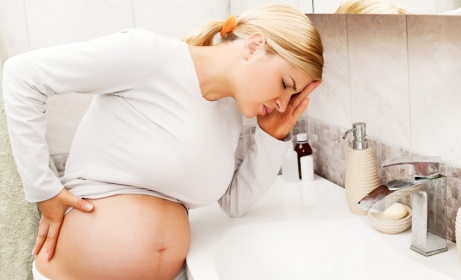
By now, everybody’s heard about Princess Kate’s pregnancy and hospitalization for severe morning sickness. What most people dont’t know, is just how bad hyperemesis gravidarum (medical lingo for really, really, bad morning sickness) can be.
We’re not talking about a little nausea and vomiting, which is par for the course for about 70 percent to 80 percent of all pregnancies during the first trimester. We’re talking about nonstop vomiting, severe dehydration and nausea that’s so debilitating it’s dangerous. Fortunately, only about 1 percent of women get this extreme type of morning sickness. Unfortunately, the Duchess of Cambridge is one of them.
When women get this sick, the biggest medical concern is dehydration and electrolyte imbalance. It’s mom we’re worried about, not baby, because babies dont’t require many calories at this point and they’ll take whatever they need directly from their mothers. Mom, however, can be at high risk for complications of dehydration including tachycardia (abnormally fast heart rate), low amniotic fluid volume, premature labor — and, in cases where mom receives no medical treatment, dehydration can potentially be deadly. Expectant women who can’t keep any nutrition down for a long period of time are at risk for muscle wasting and bone loss. Women with hyperemesis gravidarum in the early stages of pregnancy, such as the duchess, dont’t face a higher risk of miscarriage. In fact, it’s usually associated with high levels of pregnancy hormones, which indicate a solid pregnancy.
The weird thing about hyperemesis gravidarum (also known as HG) is that the more dehydrated mom becomes, the more nauseated she’ll become and the more likely she is to vomit. The most important treatment for HG is IV hydration and medications to stop the nausea and vomiting. Most moms-to-be feel a whole lot better after a bag or two of IV fluids though some, like Kate apparently, need more intensive therapy. High doses of vitamin B6, over-the-counter medications (such as Dramamine and Unisom) and such high-octane prescription drugs as Zofran (used for chemotherapy patients with nausea) are often prescribed and usually effective.
Most women feel less miserable and more human by about 20 weeks of pregnancy, though some feel rotten for the entire nine months. Some moms-to-be who can’t eat at all need a PICC line (Peripherally Inserted Central Catheter), which is like an IV that’s inserted into a vein (usually in the upper arm) and advanced until it reaches a large vein in the chest near the heart. She can get TPN (Total Parenteral Nutrition, a custom-made IV solution) therapy through her PICC line to provide all the nutrients that she and her baby need. This usually requires ongoing hospitalization, though some patients can receive care at home from a home health nurse.
As if Princess Kate didn’t have enough going on, a couple of Australian DJs played a prank that compromised her privacy in the hospital. They called the hospital, pretended to be the Queen and got a gullible nurse to give them private medical information. While a lot of people think that’s milk-through-the-nose funny, I think it’s cruel. Kate deserves as much privacy and respect as every mother and patient in the hospital, and her health isn’t a joke. In addition, that poor (yet foolish) nurse who took the call will undoubtedly be reprimanded and who knows … might even lose her job. Just how funny is that prank now?
The original version of this article is written by Jeanne Faulkner, R.N. and can be found on this link.
“MummySG, where every Mum is awesome.”






